Article by: Sean
Article applies to: All BMW models with the M70 V12 engine.
Problem: When replacing my water pump (all belts removed) I felt some shaft play on my alternator.
Although the voltaqe regulator with brushes were recently replaced, I decided to replace the alternator when I could lay my hands on a rebuild one.
It took me a while, but after some time I found a nearly new alternator fitted on a saggy 750iL that I originally bought for parts. Swapping time!
The picture above shows the old alternator versus the new one resting on my workbench.
Background: The voltage regulator story documented on this site has enough background information about alternators so I won’t go into details about technical background of the alternator itself.
The voltage regulator is hard to replace, but you ain’t see nothing yet if you want to actually replace the alternator itself. It’s a though job and lots of parts must be removed.
Located between the hydraulic pump and distributor you can barely see it.
I thought hard about an easier way (from underneath) but I just couldn’t figure it out. Read more on this later.
A remark must be made: this story is about the alternator located above the hydraulic pump on the left side (driver side) of the engine.
Later, BMW relocated the alternator and placed it underneath the a/c compressor.
This is a picture of the new location, sorry about the poor quality:
I will go into detail about the procedure, but basically it comes right down to this:
Remove fan, shroud, radiator (and oil cooler, if fitted), tensioner, alternator belt, left MAF, upper air filter housing and distributor cap (for convenience).
Some people told me they could remove the alternator without removing the radiator, but I never got real proof of that.
Let’s start unbolting and removing parts:
This replacement was done in a raging hurry, taking just a couple of photo’s. For better understanding I included some photo’s from other stories.
Disconnect the B+ and the D+ terminal at the battery post. Remove cover of the + terminal:
Remove MAF, upper air filter housing, intake boot, distributor cap (left all wires, just tied it back towers the fuse box with a piece of string).
I drained the radiator and removed the upper hose (see for in-depth details ‘radiator replacement‘ and ‘water pump replacement‘).
In this picture you’ll see the alternator exposed:
Removing the radiator. I hate to remove it just for alternator replacement, but I simply could not find a solution with an installed radiator:
Next step is removal of the primary belt and tensioner:
Remove the bolts of the tensioner, take off drive belt and tensioner:
The whole tensioner assembly must be removed because it’s blocking the removal of the alternator. Don’t forget to remove the lower air duct from the alternator.
The alternator is mounted with 3 bolts to the engine bracket. One is already removed while removing the tensioner, the other 2 are hidden beneath the alternator:
Removing lower one:
Loosening rightmost:
The alternator is loose, slide it forward:
It must be moved towards the car as far as possible, in able to remove the D+ and B+ leads:
Leads removed, the alternator can be lifted out while slightly bending the large P/S hydraulic hose at the side out of the way:
You don’t see this very often: the upper half of the hydraulic pump:
Espen Jargen from Germany figured out another way:
I removed:
- MAF and upper air filter housing in one piece
- AUC sensor on the radiator
- The small hose connected to the top left corner of the radiator
- Distributor cap (left all wires, just tied it back towars the fuse box with a piece of string)
- Belt tensioner
I was then able to slide the generator forwards and down, exposing the voltage regulator. By a certain amount of twisting and turning of the generator, and also bending the vertical oil pipe ever so slightly, I was also able to wiggle it backwards up and out.
It is recommended to cover the inside of the radiator with a piece of good sized cardboard or hardboard, to avoid scratches and damages to the radiator. Slides better, and also protects your knuckles.’
This is a picture how Espen did it…hats off to you my friend (notice he removed also the upper radiator hose):
As stated, I didn’t succeed it doing it this way.
In the end, sometimes things can be done quicker by simply removing more parts out of the way although at first sight it seems like taking the long road.
This is just my humble opinion, decide which works best for you.
Total amount of time: this baby took me a full day…so far the raging hurry…
Skills needed/difficulty level: again a *tough* job.
Satisfactory level after the job done: The voltage fluctuations mentioned in ‘voltage regulator replacement’ are still present, even with this brand new alternator, so this seems a fairly normal effect on the early models. Also others reported this.

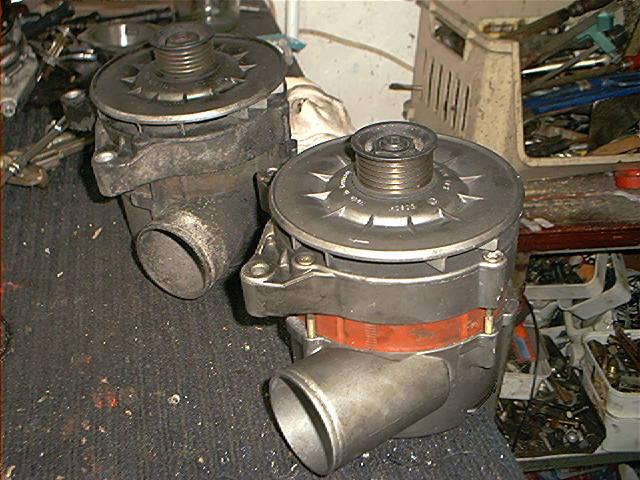
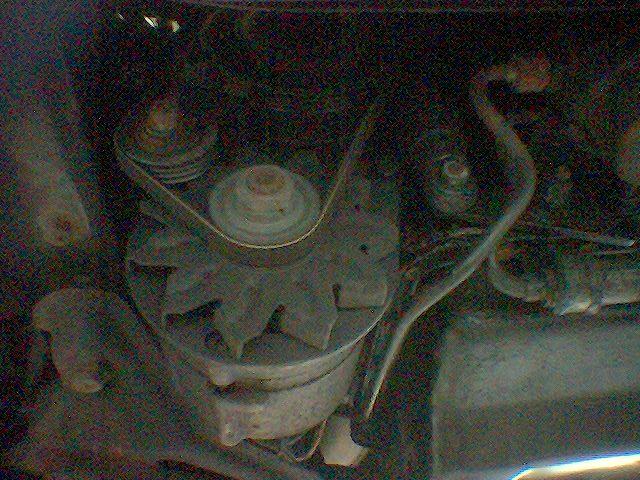
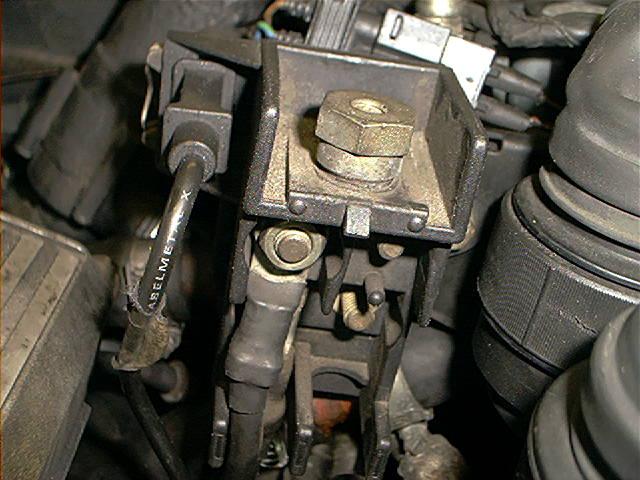
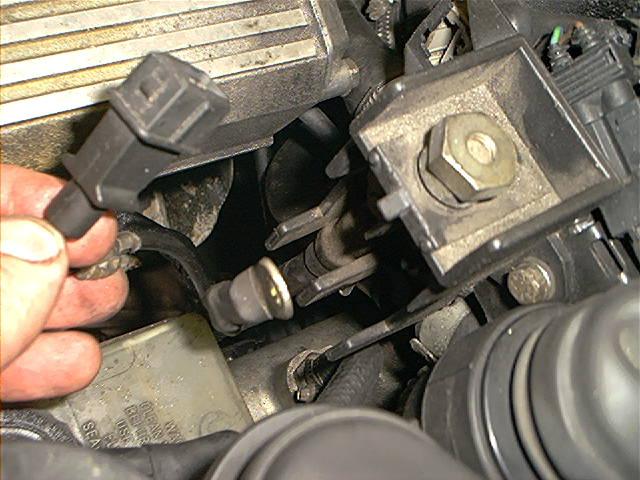

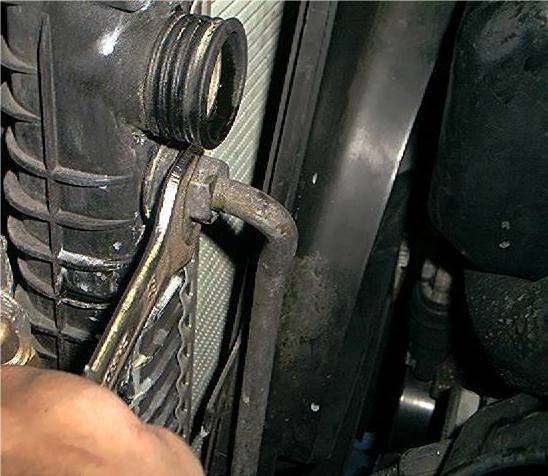

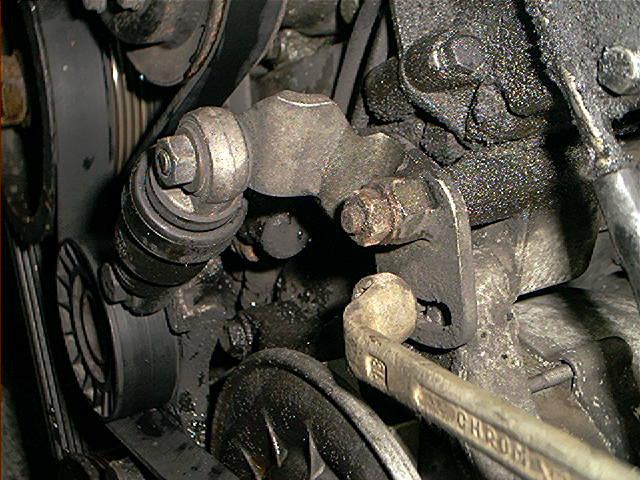
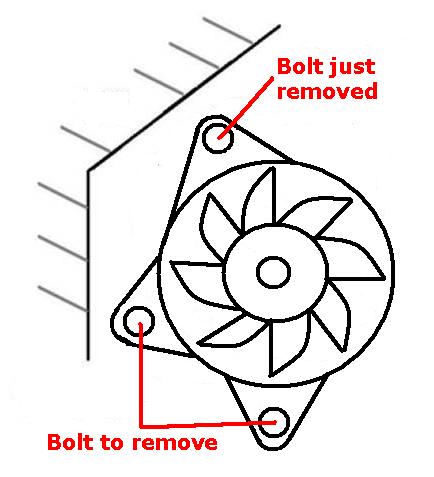
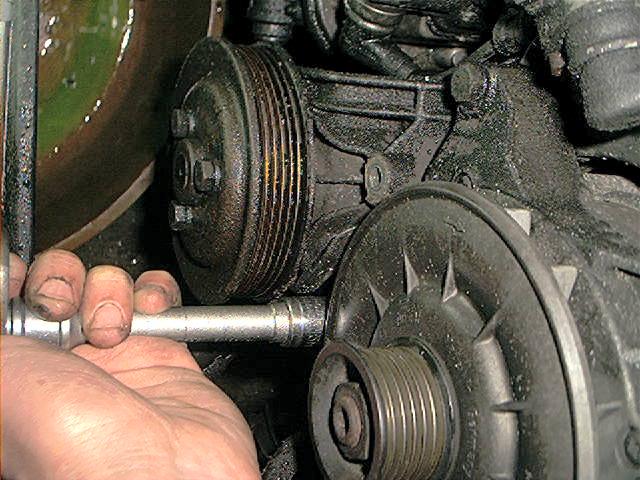
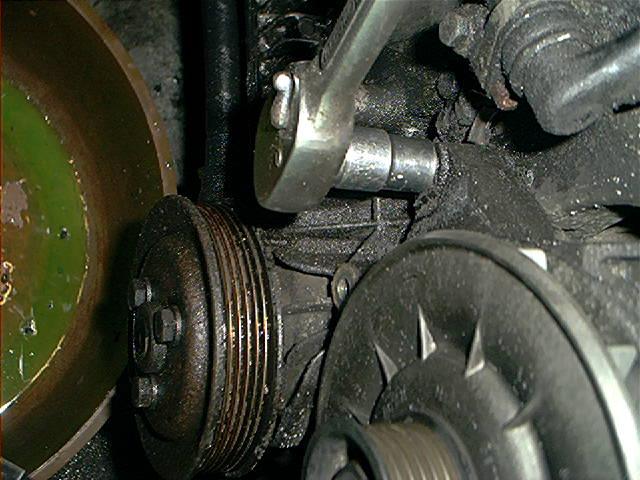
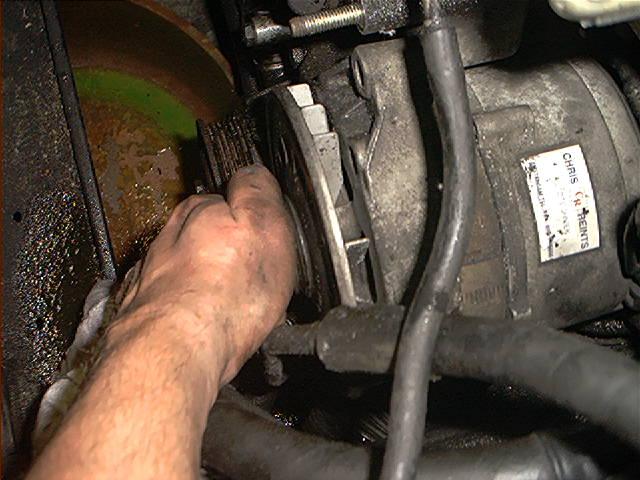
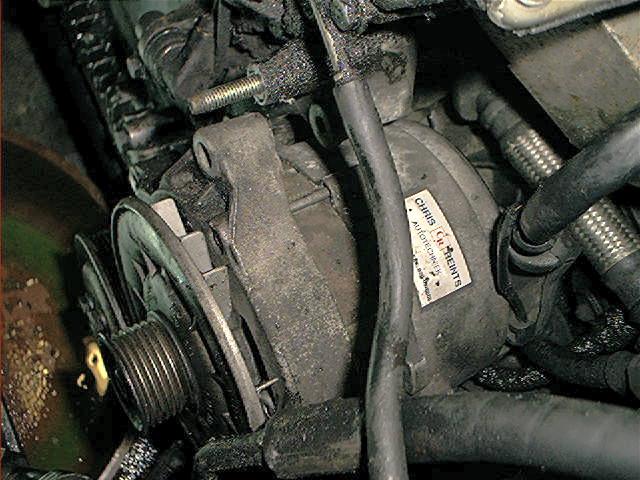
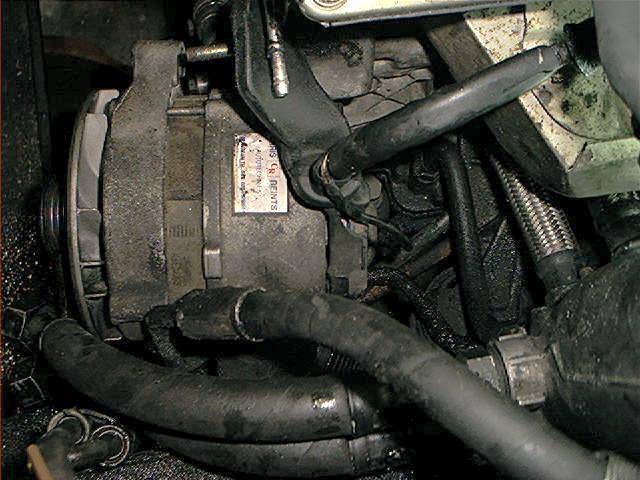
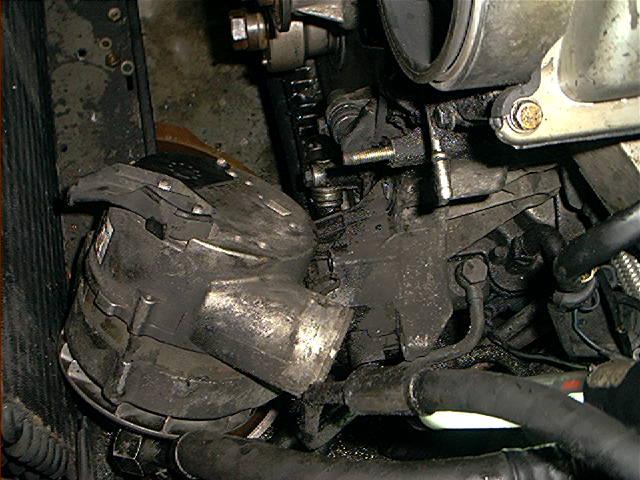
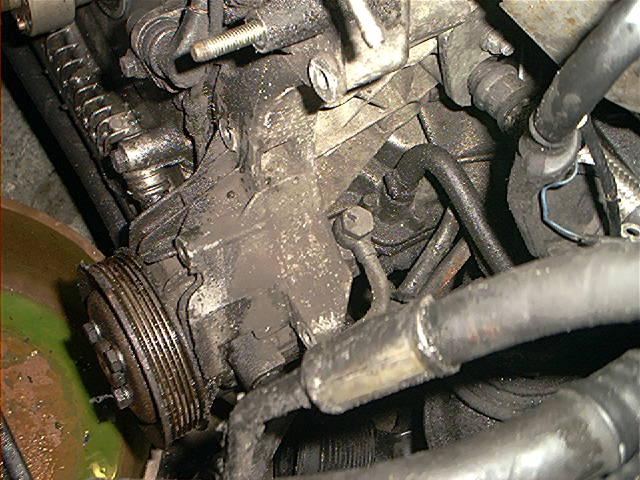
![alternator_out[1]](https://www.shiftbmw.com/wp-content/uploads/2013/04/alternator_out1.jpg)